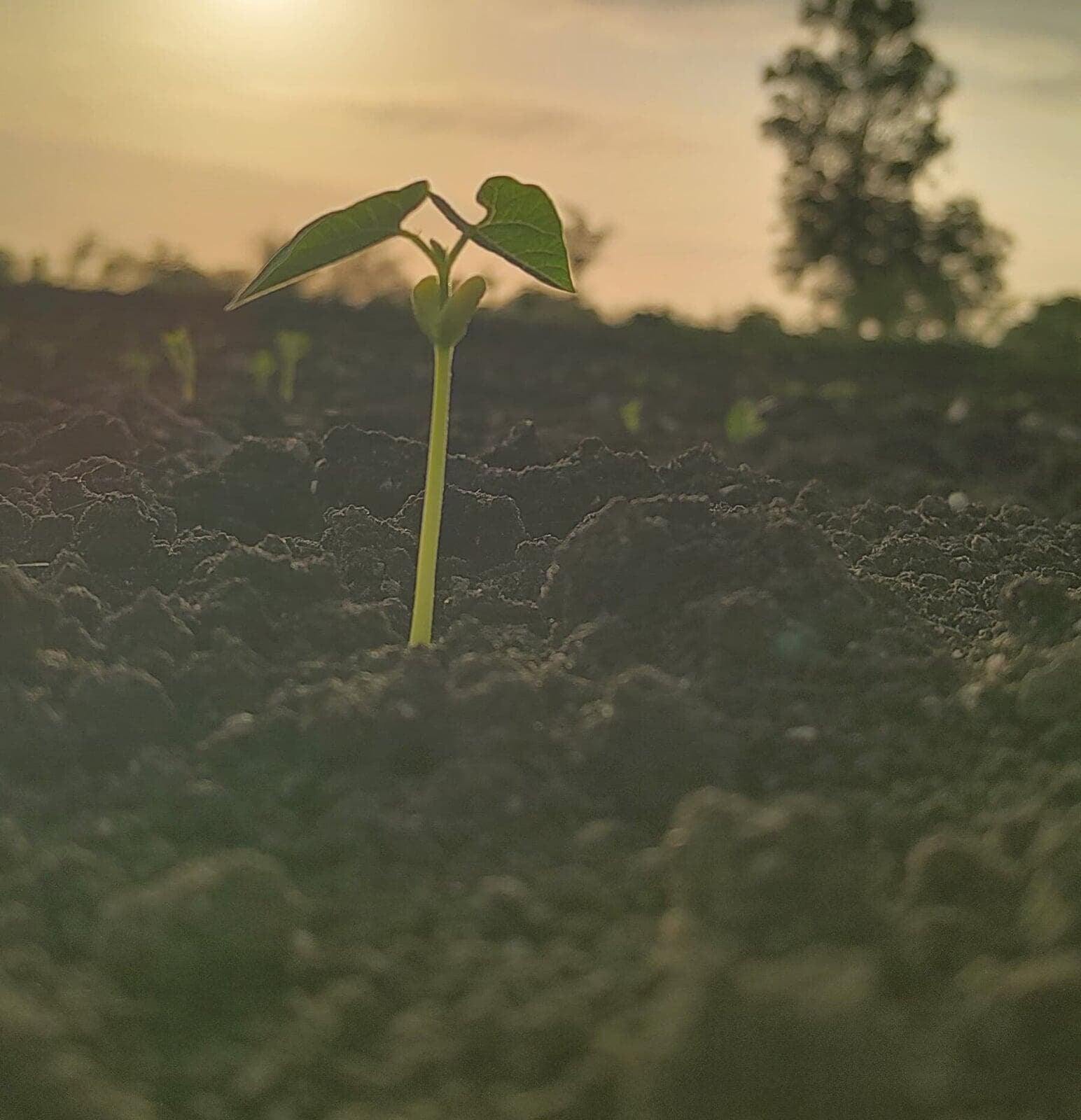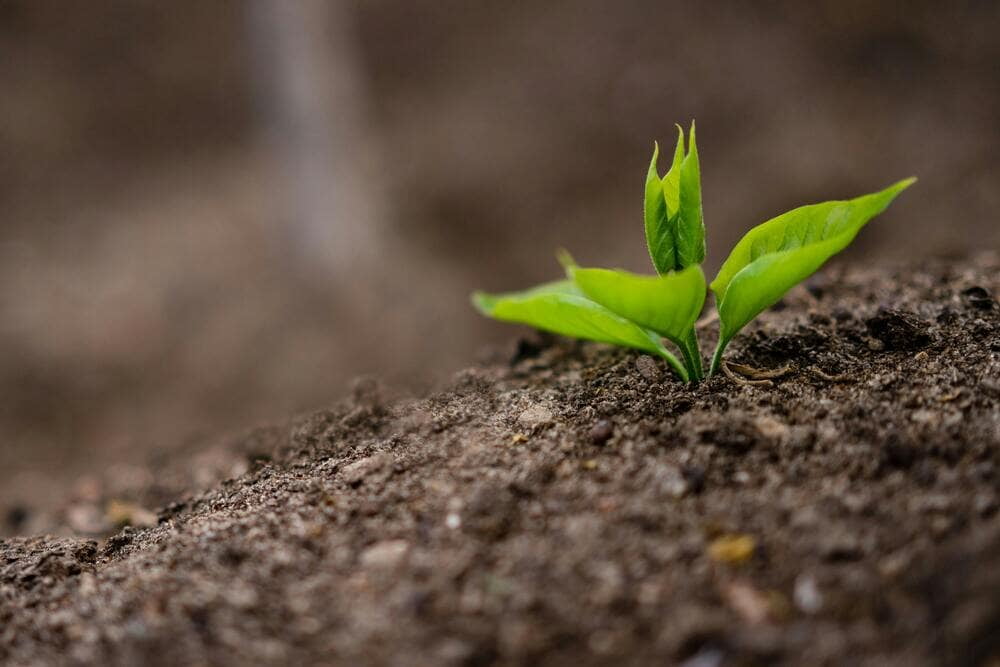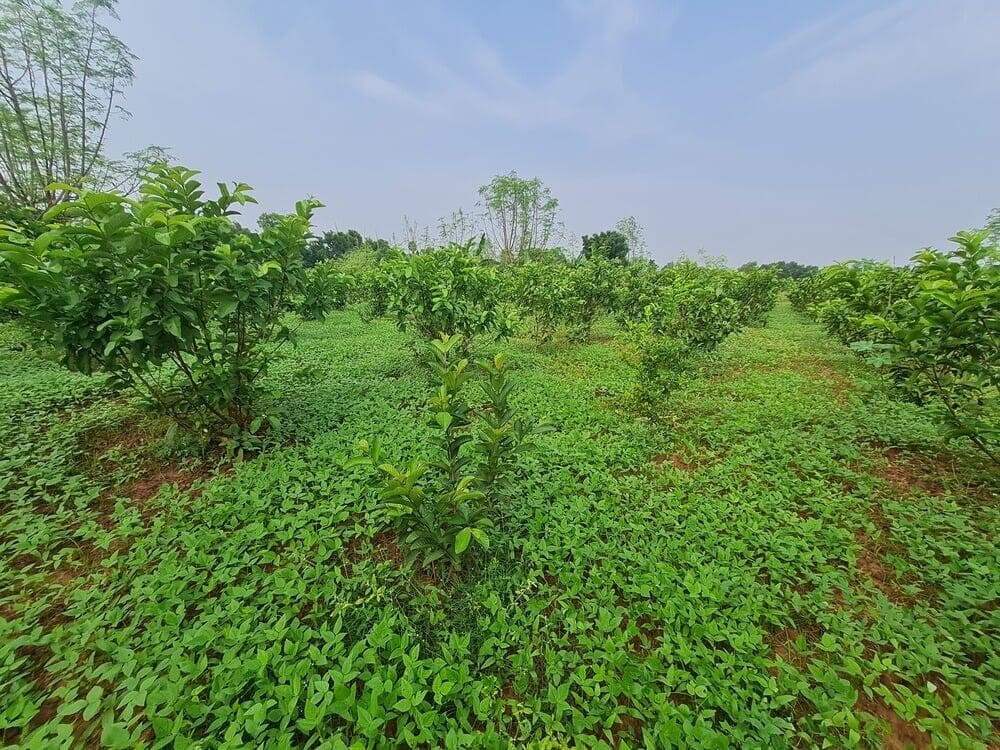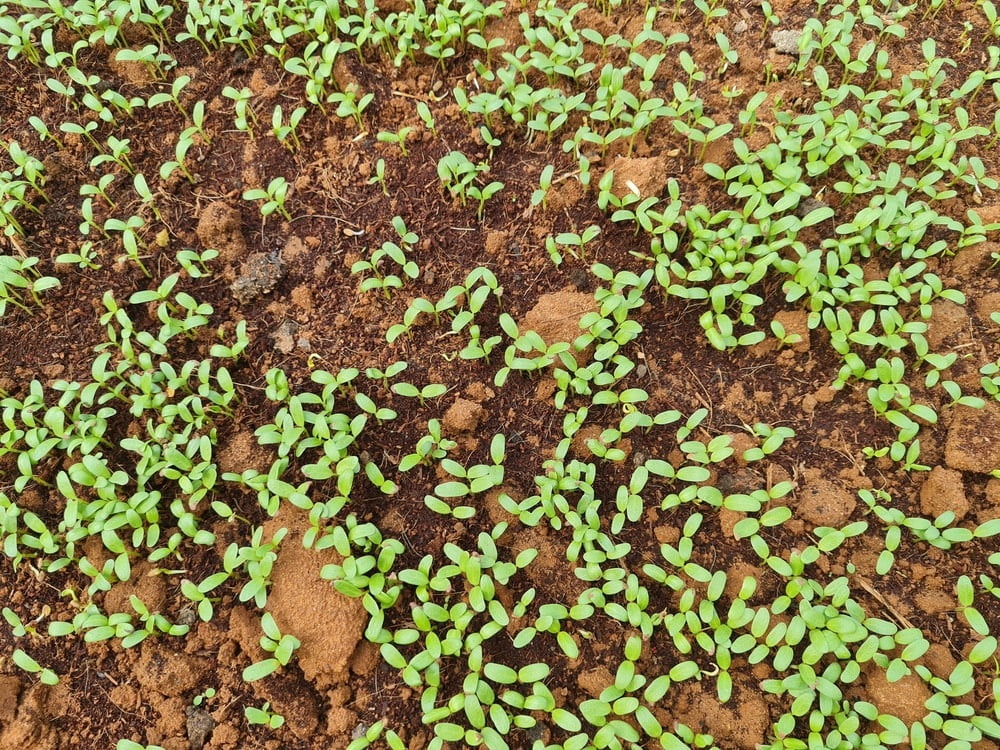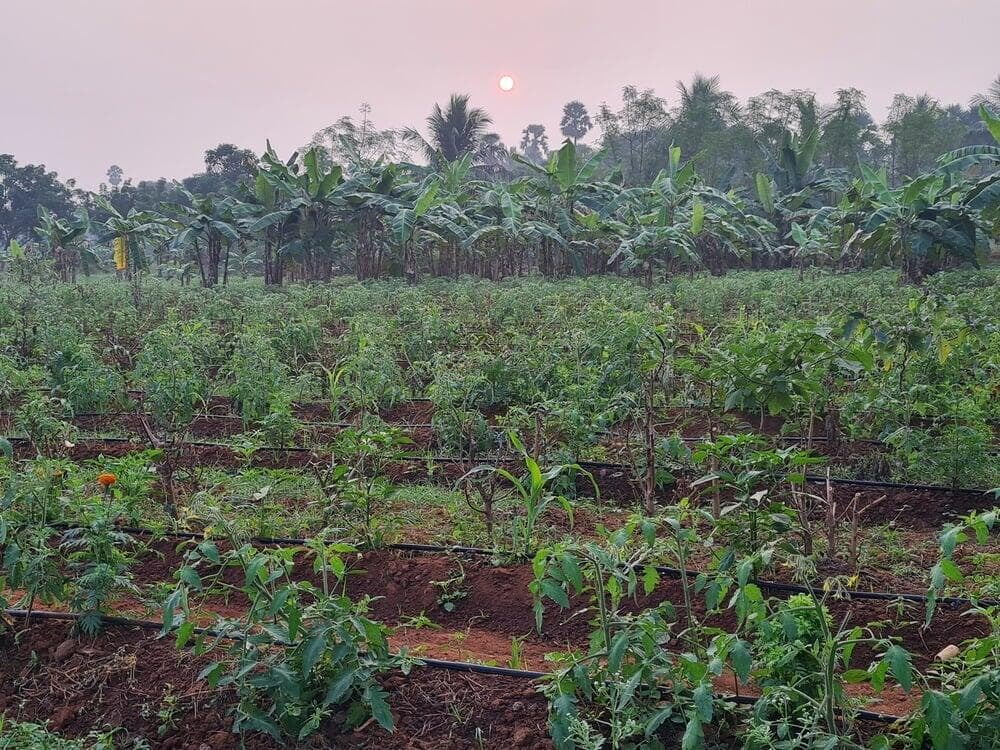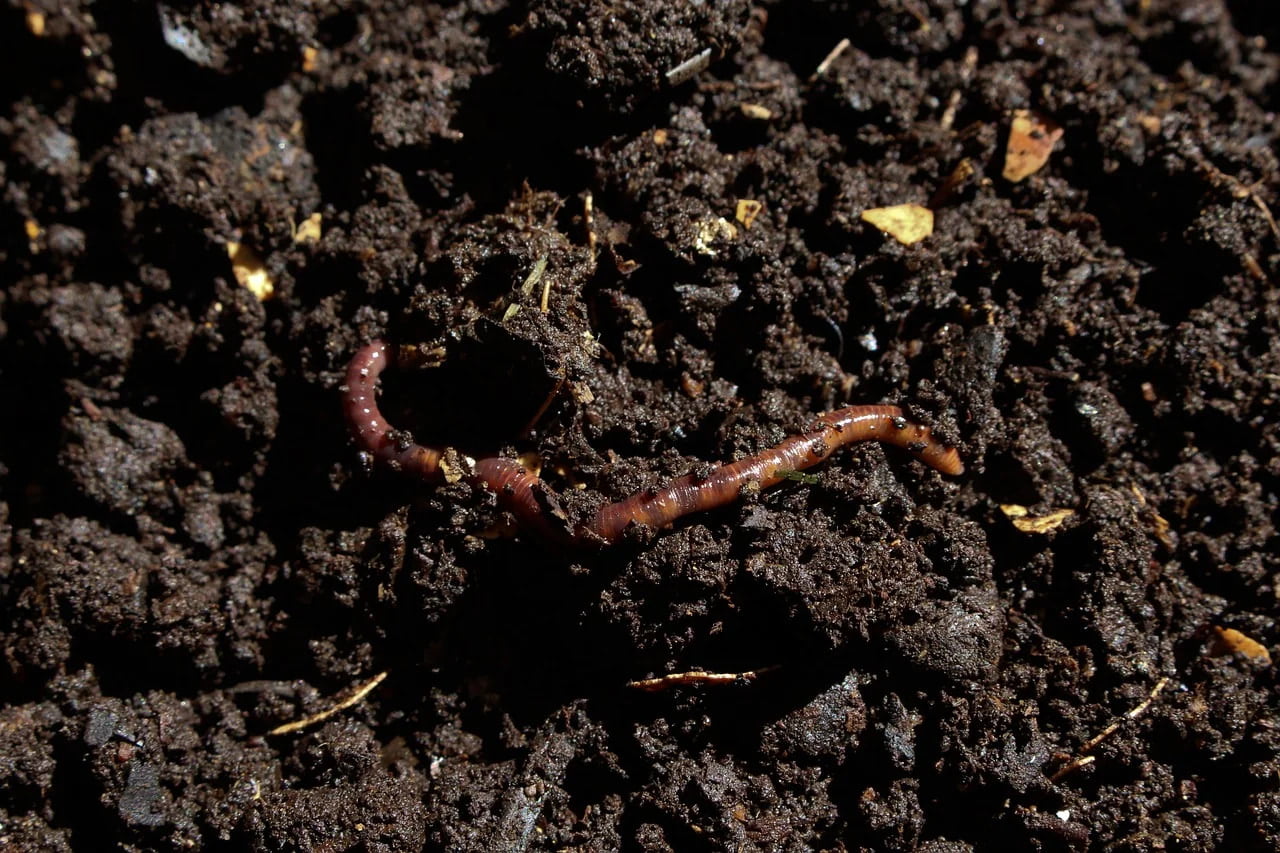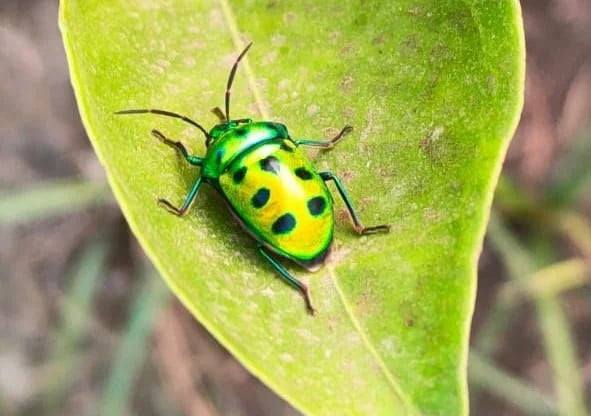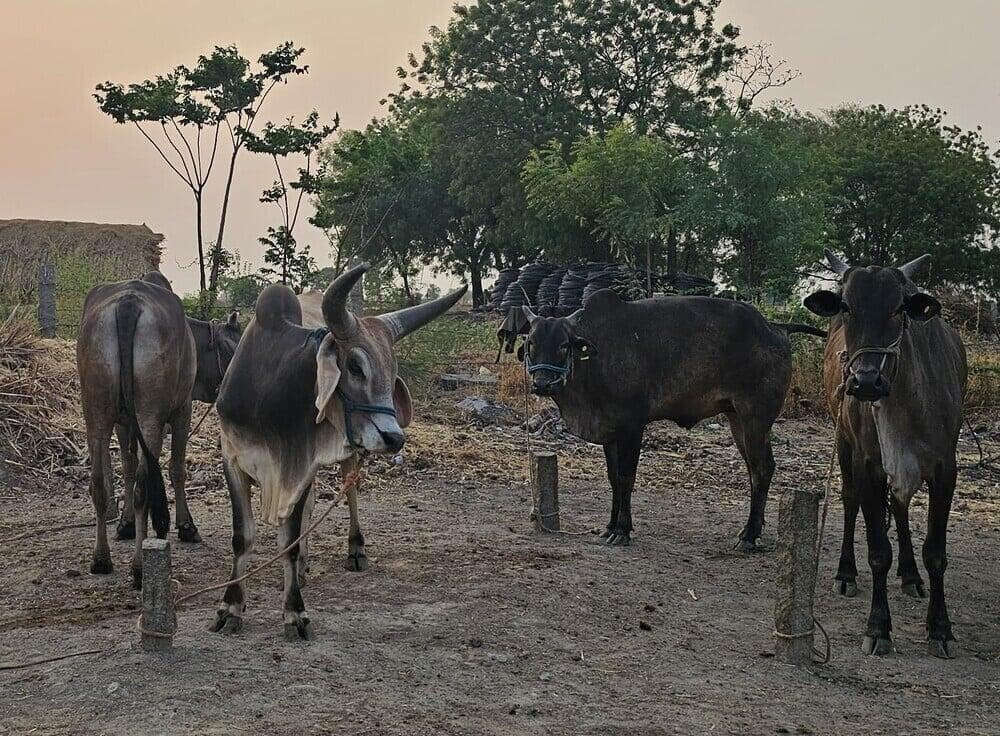Our Natural Farming Practices
What is healthy soil?
What is healthy soil?
Healthy soil is that which allows plants to grow to their maximum productivity without disease or pests and without a need for off-farm supplements.
Healthy soil is teeming with bacteria, fungi, algae, protozoa, nematodes, and other tiny creatures. Those organisms play an important role in plant health.
Soil bacteria produce natural antibiotics that help plants resist disease. Fungi assist plants in absorbing water and nutrients. Together, these bacteria and fungi are known as “organic matter.” The more organic matter in a sample of soil, the healthier that soil is.
Quantifying healthy soil
Quantifying healthy soil
To determine if soil is healthy, farmers measure several factors. How many microorganisms are present? How many nutrients-nitrogen, for example-are in the soil? How well does the soil retain water? How much carbon can the soil sequester from the atmosphere?
Our experience has shown that while conventional systems erode and deplete soils, natural systems improve and build the soil over time.
Why Does It Matter?
Why Does It Matter?
Healthy soil contains aggregates that help it bind together, preventing erosion. It can hold more water, so plants fare better. It contains more bacteria and fungi that help plants fight deceases and pests. And healthy soil also contains more minerals and nutrients that feed plants.
Every natural farming practice contributes to healthy, resilient soil that can support abundant life both below and above ground, making organic farming a powerful tool for soil conservation.
What are cover crops?
What are cover crops?
Cover crop is any crop grown to cover the soil and may be incorporated into the soil later for enrichment.
Cover crops primary job is to improve the soil. They get planted in fields that would otherwise be bare-in between growing seasons, for example-to protect the soil from erosion and nutrient loss.
Cover crops also help smother weeds, control pests and diseases, enhance water availability, increase biodiversity and bring a host of other benefits to the farm. Think of cover crops as a living mulch.
How it works
How it works
Every time a farmer grows a crop, the plants draw nutrients out of the soil. After the harvest, those nutrients need to be returned so that the next crop is equally bountiful.
Certain cover crops have the unique ability to “fix” nutrients like nitrogen from the atmosphere and return them to the soil, making them an indispensable tool in maintaining and increasing soil fertility without chemical use.
Uses on the farm
Uses on the farm
Cover crops are an integral part of natural farming. They help return nutrients to the soil and create a weed-suppressing mulch.
Many cover crops do double duty-they can be planted either for profit or fertility and weed control depending on the farmer’s intent. Examples include Austrian peas, mustard, and , among others.
Why Does It Matter?
Why Does It Matter?
Conventional farmers rely on synthetic fertilizers and chemical herbicides to return nutrients to their soils and fight weeds. Those methods have a host of unintended consequences, including water pollution, soil erosion, and loss of essential biodiversity among others.
Natural farmers rely on other methods, including cover cropping, to achieve the better results.
What is crop rotation?
What is crop rotation?
Crop rotation is the practice of planting different crops sequentially on the same plot of land to improve soil health, optimize nutrients in the soil, and combat pest and weed pressure.
For example, say a farmer has planted a field of corn. When the corn harvest is finished, he might plant beans, since corn consumes a lot of nitrogen and beans return nitrogen to the soil.
A simple rotation might involve two or three crops, and complex rotations might incorporate a dozen or more.
Why Does It Matter?
Why Does It Matter?
Different plants have different nutritional needs and are susceptible to different pathogens and pests.
If a farmer plants the exact same crop in the same place every year, as is common in conventional farming, Crop continually draws the same nutrients out of the soil. Pests and diseases happily make themselves a permanent home as their preferred food source is guaranteed. With monocultures like these, increasing levels of chemical fertilizers and pesticides become necessary to keep yields high while keeping bugs and disease at bay.
Crop rotation helps return nutrients to the soil without external inputs.
The practice also works to interrupt pest and disease cycles, improve soil health by increasing biomass from different crops root structures, and increase biodiversity on the farm. Life in the soil thrives on variety, and beneficial insects and pollinators are attracted to the variety above ground, too.
What is compost?
What is compost?
Compost is created from the aerobic decomposition of many materials usually considered waste, including food scraps, animal manures, leaves, straw, and more.
Composting occurs when carbon-rich materials (“browns”), like straw and leaves, are mixed with nitrogen-rich materials (“greens”), like food scraps and manure.
Add oxygen, time, some skilled management, and the help of billions of microorganisms. The finished result is crumbly, sweet-smelling, and nutrient-packed compost.
Why Does It Matter?
Why Does It Matter?
Conventional farmers rely on synthetic fertilizers made from fossil fuel-intensive petroleum that can pollute local water supplies and harm wildlife. Organic farmers rely on inputs like compost instead.
Not only does compost drastically reduce an natural farmer’s need for chemical inputs, but the process of creating compost recycles farm materials, too.
When incorporated into the soil, compost provides a diversity of microorganisms and nutrients that encourage healthy plant growth and development.
What is natural pest management?
What is natural pest management?
Bugs and insects are a given on any farm. Some bugs are beneficial-they prey on the bad bugs and provide valuable pollination. But other insects pose a threat. Pests can damage the appearance of fruits and vegetables. Even worse, some pest damage can kill a crop outright. Conventional farmers spray toxic pesticides to eliminate pests. Natural farmers use alternative strategies to reduce and control pests without the use of synthetic inputs.
The strategies
The strategies
The first line of defense is prevention. Healthy soil creates strong plants that are resilient to pest pressure. Farmers can encourage populations of natural predators and beneficial insects, like ladybugs. Other strategies include rotating crop and selecting pest-resistant varieties of crops. When pests become a more serious problem, organic farmers might use natural methods to disturb pest mating cycles, or mechanical controls like trapping.
Why Does It Matter?
Why Does It Matter?
Chemical pesticides pollute our air and water. They kill good bugs and insects, too, destroying biodiversity in a way that has a ripple effect on ecosystems throughout the farm. Natural pest management is a holistic approach. Natural farmers implement many strategies, including those detailed above, to reduce the use and consequences of chemical pesticides and promote a farm system that works in harmony with nature. The result is stronger plants, healthier wildlife, and a cleaner environment for everyone.
What is rotational grazing?
What is rotational grazing?
Rotational grazing is the practice of containing and moving animals through pasture to improve soil, plant, and animal health.
Only one portion of pasture is grazed at a time while the remainder of the pasture “rests.” To accomplish this, pastures are subdivided into smaller areas, referred to as paddocks, and livestock are moved from one paddock to another.
Resting grazed paddocks allows forage plants to recover and deepen their root systems.
Why Does It Matter?
Why Does It Matter?
Left alone on a patch of land, animals like cattle and hogs can quickly destroy all signs of life, compacting the soil as they go.
However, if the animals are managed with rotational grazing, the soil sees big returns.
Grazing encourages plants to send out more and deeper roots. Those roots are continually sloughed off to decompose in the ground, boosting soil biomass and fertility and sequestering carbon from the atmosphere. Rotational grazing also helps prevent erosion and agriculture runoff.

